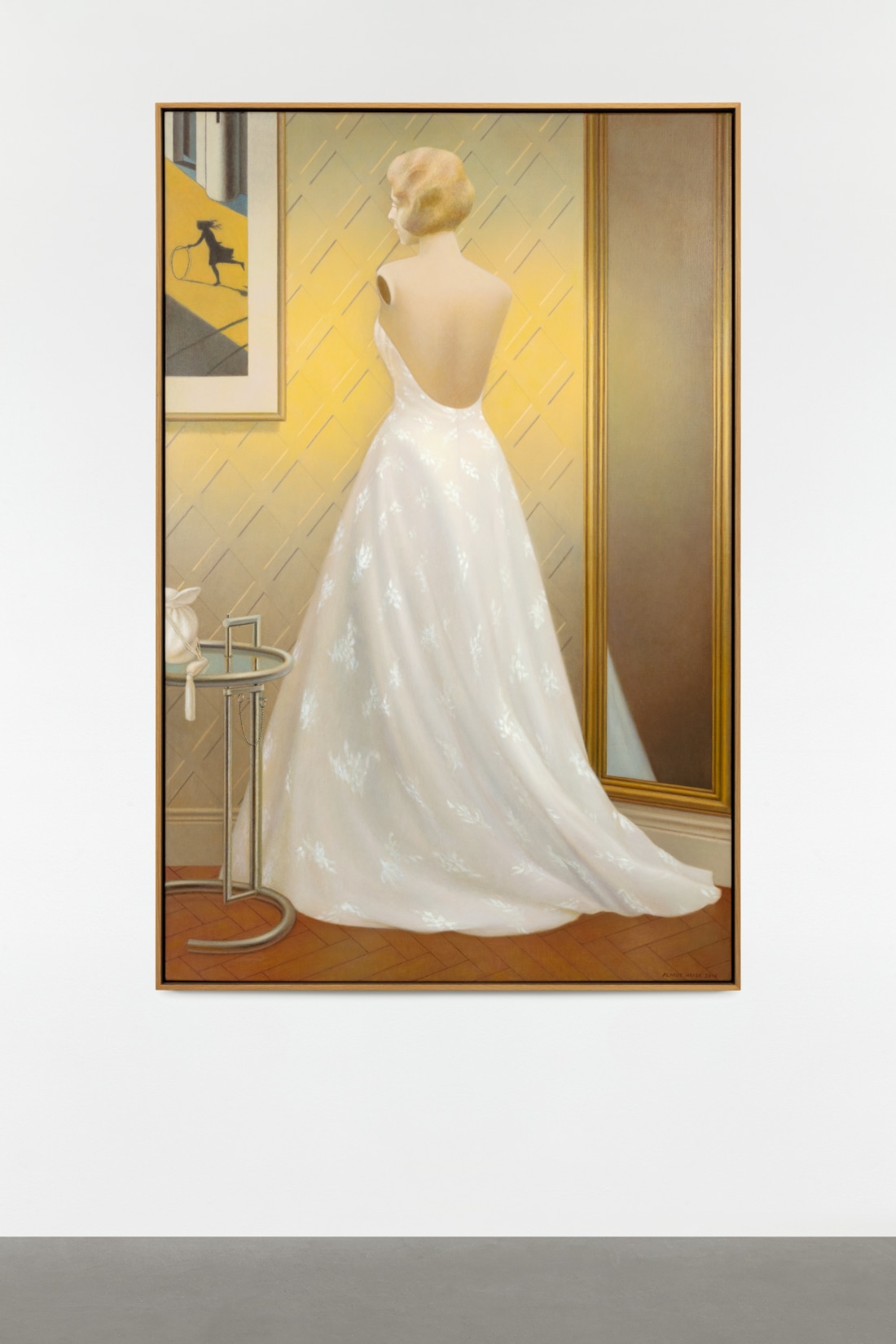In Schaufenster (2016) the artist dispenses entirely with the human body and instead introduces a mannequin with its back turned to the spectator. The work is compelling on several levels: the viewer not only looks into the shop window at the mannequin—which is clothed in an elaborately embroidered white lace dress, and framed by a mirror on one side and an Eileen Gray table on the other—but also into another “window” or “picture within a picture,” namely a detail with a playing girl from Giorgio De Chirico’s famous metaphysical painting Mystery and Melancholy of a Street (1914), a recurring reference in Heise’s work.
—Marie-Catherine Vogt, 2021
Your shopping basket
No items found
